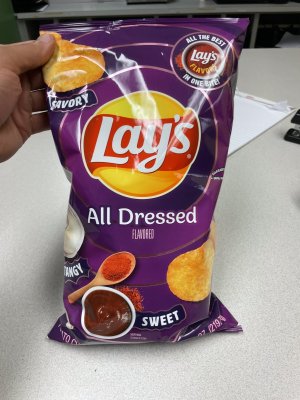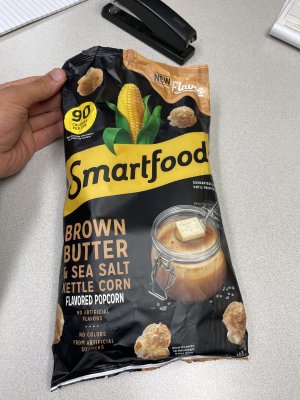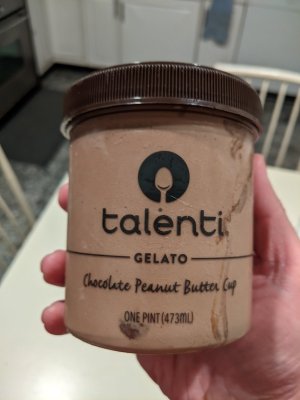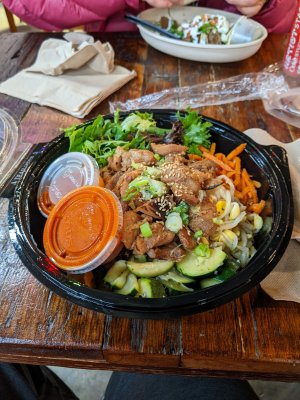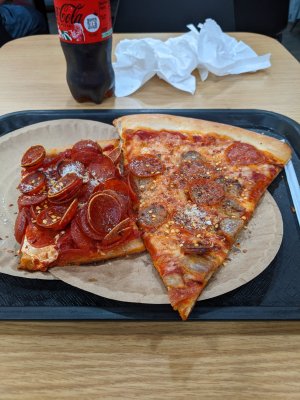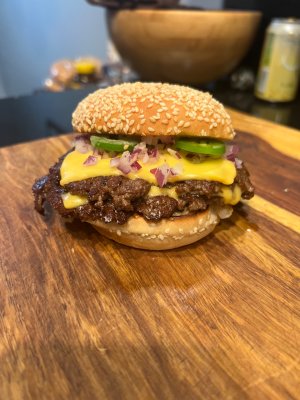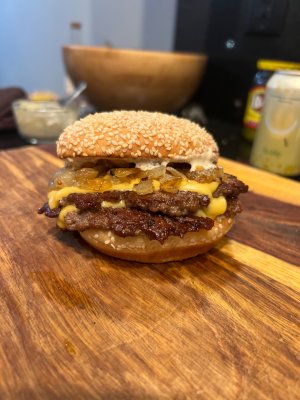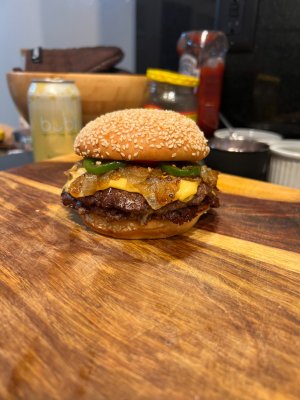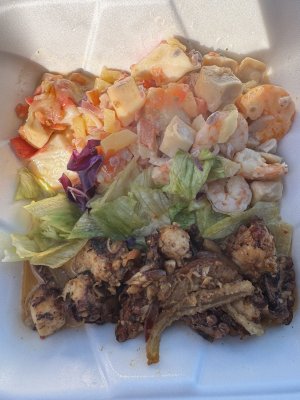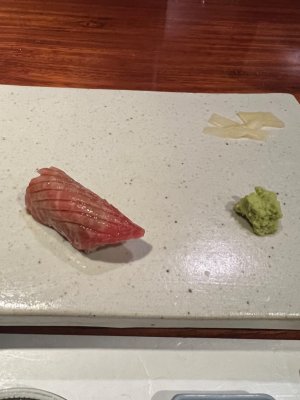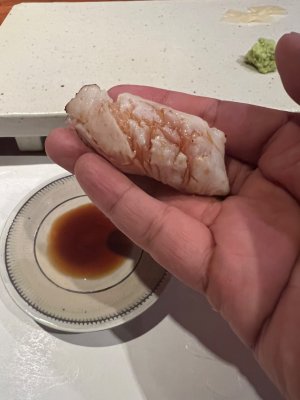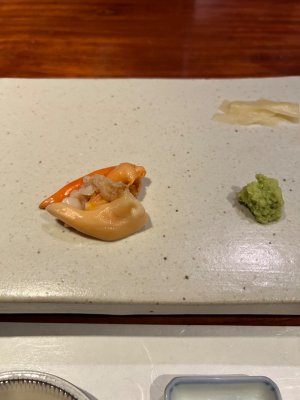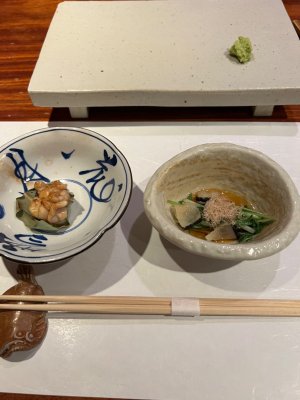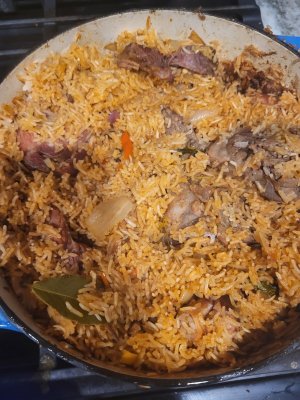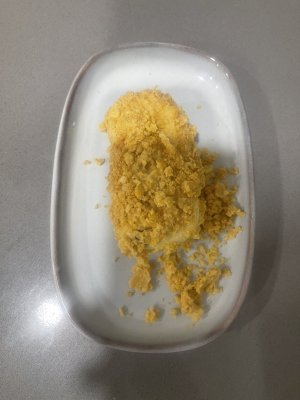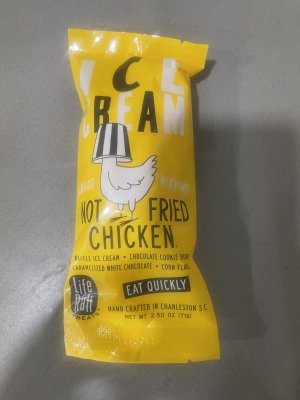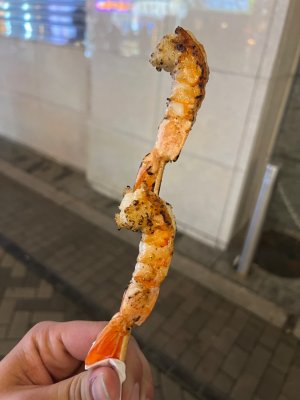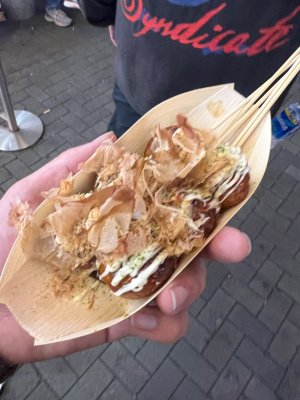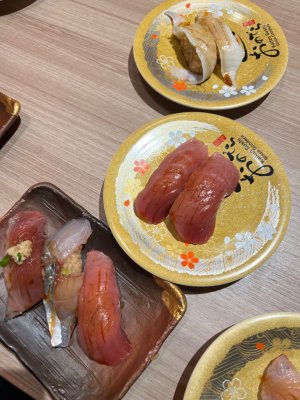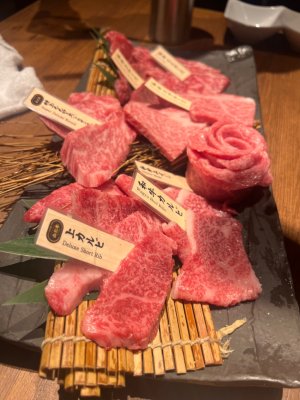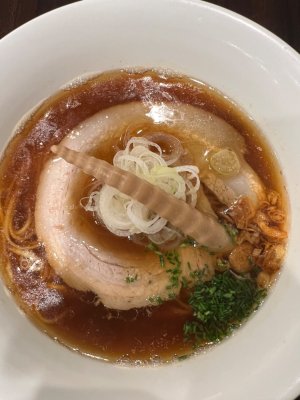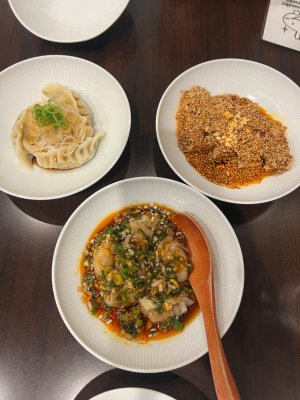The Myth of Authenticity Is Killing Tex-Mex
getpocket.com/explore/item/the-myth-of-authenticity-is-killing-tex-mex-2103613153
Save the stories you love in Pocket
Sign Up
Must Read on Pocket
This is one of the most-saved, read, and shared stories on Pocket.
The official version of chili con carne can only be made by people from Texas. It’s literally the law: In 1977, the 65th Texas Legislature enshrined the stew of beef and chile peppers as the official state dish, but also an official version of the dish, declaring that “the only real ‘bowl of red’ is that prepared by Texans.” Defending chili from non-Texan contamination was at least a half-century too late, but now those offenders slapping ground beef and chili powder on French fries and hot dogs and spaghetti and — despite repeated warnings — adding godforsaken beans would know they were wrong.
But the zeal for defending Texas chili has dwindled considerably in the 21st century; there is a new national sensation to claim and protect. In 2013, Texas Monthly barbecue editor Daniel Vaughn, in solidarity with longtime writer for the magazine and proud chili-hater, Paul Burka, launched a campaign to depose chili as the state dish in favor of brisket — specifically, the Texas-style barbecue brisket in the process of taking over the world, its cult rooting down in cities like New York, Los Angeles, and Paris.
The debate over the state food is, on one hand, deeply silly. Over the phone, Vaughn explained to me the brisket campaign was his most pugnacious moment as a professional barbecue evangelist. He bears chili no ill will — he just wrote a guide to brisket chili, in fact. His targets were the lobbyists who sought to make chili the state dish in order to promote their cook-off in far West Texas’s tiny Terlingua. “In comparing what Texas is more well known for, a bowl of chili or brisket, it’s brisket,” Vaughn says.
But selecting a state dish also, like literally every other question of food ownership in America, quickly surfaces large, painful assumptions about whose food matters and why, fractured along the lines of race, national origin, and ethnicity. Smoked brisket is fetishized as Texan authenticity, but its veneration leaves out many Texans. The cut of beef, as Vaughn later noted in his 2015 profile of Robert Patillo of Patillo’s Bar-B-Q, the oldest black-owned barbecue restaurant in Texas and the fourth oldest in the state, is primarily associated with the state’s white pitmasters, and Texas Monthly’s decision to assess a barbecue restaurants based on their brisket largly left out the black-owned businesses that helped originate and preserve Texas barbecue. The brisket tunnel vision is much less evident in the magazine’s 2017 barbecue rankings.
Chili, on the other hand, was originally popularized by women, most of them Tejanas or Mexican — San Antonio’s long-lost chili queens — though they go unmentioned in the state resolution. Whatever the chili lobby’s original aims, it ensured that Texas cuisine was officially represented by a food that spoke to the state’s Mexican roots. And chili con carne, even if it’s now out of style, has had the kind of cultural impact Texas barbecue brisket is only beginning to dream of: Chili was the first and most famous manifestation of the robust, misunderstood, supposedly inauthentic and staggeringly influential cuisine that we now call Tex-Mex.
Visitors to Texas often marvel at the endless cornucopia of barbecue establishments and, their guts ruptured, wonder how beef-drunk Texans eat this way every day. The answer is: They don’t. Barbecue is, for most people, a long Friday lunch or weekend drive out to the country, a three-hour wait with a cooler full of beer, a tailgate for meat. Mexican food, especially Tex-Mex, is eaten for breakfast, lunch, and dinner. When I get off the plane in Austin, my first stop is not Franklin Barbecue (though I’ll get my fix eventually). For a taste of what I miss most, I beeline for a migas taco from Veracruz All Natural, followed by a plate of cheese-topped enchiladas at Amaya’s, and then meet friends for a Mexican martini and a huge bowl of queso at Trudy’s. Take it from someone who — while I was the editor of Eater Austin — spent two years chronicling the barbecue boom: It’s time Tex-Mex got its due.
The standard narrative about Tex-Mex is that it’s an inauthentic, unartful, cheese-covered fusion, the kind of eating meant to be paired with unhealthy amounts of alcohol or to cure the effects thereof. There’s a lot of easy-melt cheese, the margaritas are made with a mix, and the salsas come from a bottle. In our snackwave food moment, Tex-Mex receives the same amount of affection and respect as a Doritos Locos taco or a microwaved burrito — a processed, comforting, lovable American monster.
Those assumptions are entirely wrong. Not only are they incorrect — they were promulgated by elite white food writers in * Pace Picante voice * New York City! In The Tex-Mex Cookbook: A History in Recipes and Photos, peerless Texas food historian Robb Walsh pins the denigration of Tex-Mex on English cookbook writer Diana Kennedy, whose introduction to her 1972 book The Cuisines of Mexico refers to the American enchilada combo plate as “so-called Mexican food” and makes the case that the real cuisine could only be eaten further south — and that there was a “real” Mexican food that exists, period. New York Times food critic and giant of the food world Craig Claiborne was a defender and acolyte of Kennedy’s, and helped popularize her anthropologically dogmatic version of Mexican cuisine.
So what is the food we call Tex-Mex, really? Its origins lie in an extremely obvious time and place that tends to be obscured in modern Texas: when Texas was part of Mexico. Before cowboys, there were vaqueros; before Anglo Texans, there were Spanish-Mexican Tejanos. Their culture gave rise to a rustic ranch cuisine heavy on local chiles, pecans, beans, stews, and flour tortillas as well as corn. (A note: chile is the pepper; chili is the dish; chilly is the opposite of how your mouth, nose, and guts will feel after consuming either.)
In the late 19th century, San Antonio was a booming railroad town and became famous for its open-air food stalls, run by women, decked out with red-and-white checked tablecloths and laundry lamps, serving food like tamales and chili con carne, according to The Tex-Mex Cookbook. Portrayed as sharp-witted and alluring by accounts from the time (by men), the Chili Queens, and their fame, helped propel their iconic dish out of Texas into the Midwest and beyond. Tamales, which likely already had a foothold in the Mississippi Delta, followed on chili’s heels.
Waves of cheesy, spicy, frankly pleasurable Texas-Mexican dishes, with many regional variations, continued to spiral outward in the 20th century and into the 21st: sizzling fajitas, cheese enchiladas, frozen margaritas, queso, breakfast tacos, Frito pie, barbacoa, puffy tacos. Along with the crispy tacos and burritos of Cal-Mex, Tex-Mex became one of America’s most beloved and important regional cuisines, even if most Americans didn’t realize that was what they were eating.
And while cities and regions across Texas have contributed iconic dishes to the pantheon, Tex-Mex is a border cuisine, and shares a great deal in common with the cuisines of Northern Mexico, another rustic ranch tradition heavy on beef, grilling, and flour tortillas. Mexican food expert and writer Gustavo Arellano, who wrote about the massive influence of Tex-Mex in American cooking in his book Taco USA: How Mexican Food Conquered America — and chronicled an eating tour from Los Angeles to El Paso for Eater — told me, “My joke about Tex-Mex is it’s invented in the Rio Grande Valley, San Antonio makes it popular, and Austin takes all the credit for it.”
The Rio Grande Valley is a three- to four-hour drive south from San Antonio, a rolling, flat, green river delta decked with palm trees, warm and slightly humid, located across its namesake river from the Mexican state of Tamaulipas. Signs trumpeting its tropical climate and welcoming back “winter Texans” (retirees) line every highway — alongside the occasional roadside marker documenting its bloody history. In the 20th century, railroads and irrigation transformed the region into an agricultural powerhouse famous for its grapefruit. The Valley is one of the poorest areas of Texas, and also one of the fastest-growing, heavily dependant on cross-border trade. It’s a bird-watching paradise and home to a robust Mexican restaurant scene, packed with both second or third locations of restaurants from Mexico and longstanding classics serving the Valley’s regional variation of Tex-Mex.
A sterling example of classic Rio Grande Valley Tex-Mex can be found at Ms. G’s Tacos N’ More in McAllen. Housed in a white cinderblock building with a green roof, Ms. G’s interior is dominated by a red, white, and green counter, with flyers attached advertising lenten meatless specials and whole-wheat tortillas. The kitchen is visible through a large, wide pass, and drive-thru windows are cut into both sides of the room. The menu board explains the restaurant’s history as the first location of a family-run chain, since sold off, and lists familiar Mexican and Tex-Mex standards like breakfast tacos, enchiladas, and barbacoa.
Ms. G herself, whose full name is Yolanda Gonzalez, runs the counter, and she told me that she serves scratch-made food just like her mother and grandmother used to make. Her mother founded the popular local chain El Pato — now a beloved standard across the Valley — in this building. After years out of the industry, Gonzalez took over this location, which had been empty for some time, and opened the restaurant to serve her family’s food. She said that the recipes, which aren’t quite “real Mexican food,” originated from her grandmother, who is from El Carmen, a small town outside of Monterrey in Neuvo León. Maybe it’s not, but it’s ranch food, cooked by the people of this region on both sides of the border.
I ordered “soft fried” carne guisada tacos, which means they are dipped in oil but not fried to a hard shell. They arrived nestled in a small paper tray, covered in lettuce, tomato, and yellow cheese. Ms. G gave me extra hot sauce, a mild and tomatoey salsa, and popped back out to make sure I didn’t need extra napkins, since the soft-fried tortillas can get messy. It was a glorious mess — the subtle earthiness of the guisada, that mild crunch of iceberg, and the bite of the hot sauce and salty cheese over top, barely contained by a slightly fatty corn tortilla. The soft-fried tortilla was a new variation to me, but the flavor was pure Texas.
But Ms. G’s is also in danger of closing. Her business relies on the drive-thru, and the new restaurant next door is claiming the alley they once shared. She’s trying to work out a solution, or to find another spot. The prospect of losing the original location of her mother’s restaurant clearly hurts — she started telling the same story to a drive-thru customer shortly after I ordered. And that’s the other issue with the classic, locally rooted Tex-Mex served by family-owned restaurants throughout the state— they are in a precarious position of being both perpetually popular and out of style, beloved and sniffed at, poised for reinvention or in danger of being lost as its own living, breathing tradition.
While family-run Tex-Mex restaurants might vanish, the key delights and innovations of Tex-Mex are in no danger of disappearance: Fajitas are in every Applebee’s; queso is on the menu at every Chipotle (for now); chili and nachos grace every tailgate; and margaritas end the workweek across America. Tex-Mex is infinite and eternal.
But within Texas, the palatial, cheese-drenched, combination plate Tex-Mex restaurant is as out of fashion as the diner in New York City or the steakhouse in Los Angeles or the fancy white-tablecloth continental restaurant in your hometown. Sometimes the food is still stellar; sometimes quality has slipped. The next generation does not always want to take over the family business, and the kids who grew up eating there with parents don’t want to return as adults. In Austin, the rampant gentrification of the city’s Mexican east side, itself a legacy of decades of segregation, is uprooting numerous Tex-Mex restaurants and imperilling others — because the rent skyrockets, because their customers can no longer afford the neighborhood, or simply because the value of the land beneath the restaurant is too high not to sell.
In other Texas cities, the situation is less starkly dire, but these restaurants are like the air, the standby pleasure, not usually celebrated as an essential aspect of the city’s identity, by outsiders or insiders. And there aren’t a ton of new Tex-Mex restaurants opening. Texas food media, like all food media, is hungry to celebrate the next new thing.
When asked why traditional Tex-Mex might be dying, experts and chefs offer various logical-sounding reasons. Conversations circled back to the same few theories, ones I had entertained as well: Tex-Mex is comfort food, and people don’t want their comfort food to change. At the same time, not everything, not even the combination plate, can endure. People want healthier, lighter restaurant meals, no one wants processed food, and family restaurants can’t last forever.
But then, Texas’s other notable tradition, barbecue, is mushrooming across the state. So people want healthier, lighter food like… smoked meat by the pound? No one wants processed food like… barbecue’s ubiquitous accompaniment, white bread? Family restaurants can’t last forever… like thriving third-generation barbecue joints? Many of those smoke-scarred, small-town destinations have recently been taken over by a generation who left for the professional world, and came back once the money, and the TV cameras, arrived, transforming their family’s tradition into a viable business. And many more of Texas’s finest pitmasters are newcomers, blending the austere tradition of perfectly smoked meat with quality ingredients and inventive flourishes, whether it’s a gargantuan brisket Frito pie or Aaron Franklin’s famous espresso barbecue sauce.
There are few meals more transcendent than luscious, velvet-soft barbecued brisket, a tough cut melted by hours of fire and smoke to sublime tenderness, served with white bread, onions, pickles, and sauce on the side. The technique and history behind this exalted hunk of beef (Institutional Meat Purchase Specification 120, to be precise, a boneless cut from a cow’s pectoral muscle) encompasses so much of what it means to eat well in Texas — and that narrative has been bought wholesale not just by outsiders, but by Texans themselves.
There are also few meals more sublime than a heap of barbacoa served with freshly made flour tortillas and hot salsa. And few dishes move a homesick Texan like a bacon and egg taco, or a bowl of queso and a margarita or three shared with friends. Ask Texas to choose between barbecue and Tex-Mex, and all but the most dedicated partisans will quail.
To be honest, I did not realize how important Tex-Mex had become to me while I was in Texas. It wasn’t until after I moved to Los Angeles, the greatest Mexican food city in America, that I found myself cooling on brisket but desperately missing combination plates and breakfast tacos, green sauce and yellow cheese. And my Texas sojourn was pure luck — I follow my girlfriend’s job wherever it leads us. I didn’t grow up eating at Tex-Mex restaurants, let alone my grandmother’s home-cooked Mexican food. This cuisine barely feels like it belongs to me at all — and yet I love it, very much. So why had I, while covering Austin, spent so much more time writing about, and talking about, barbecue? Part of it was the demands of being on a news beat — there were new barbecue restaurants, and dramas, and brisket-battles weekly, and staggering numbers of my readers had a near-endless appetite for reading about, arguing about, and daydreaming about this most hallowed of smoky meats. Meanwhile, few new Tex-Mex restaurants opened, and too many closed.
What does barbecue have that Tex-Mex doesn’t? It has meat, it has fire, it has an aura of mastery — and, currently, it’s associated primarily with Anglos, and the area in and around Texas’s famously progressive, and also profoundly segregated city, Austin. The state has a robust tradition of black pitmasters; Franklin Barbecue is located in what was formerly Ben’s Long Branch Bar-B-Q, a black-owned business in a historically black neighborhood, originally created by Austin’s segregationalist 1928 city plan. Black pitmasters at restaurants like Sam’s Bar-B-Que and Hoover’s still smoke nearby. And Mexican pit-smoked barbacoa, a weekend staple in the Rio Grande Valley, existed before Texas was Texas.
But the “easy story” of central Texas barbecue, as Daniel Vaughn calls it, disseminated across the country, is about, and told by, people who are almost entirely white, and male. Each of these cooks and obsessives are individually passionate and often brilliant — and some, like Aaron Franklin, are downright leery of their own fame — but the aggregate effect is Texas barbecue being treated with almost comical importance, driven by a self-perpetuating cycle where tastemakers champion genuinely wonderful food made by people who look like them. (This isn’t an issue just in Texas barbecue, but that obsessive model kicked off our smoke-worshipping zeitgeist, and created a model for, say, the Ugly Delicious barbecue episode, which featured no black pitmasters).
And that narrative imbalance has real consequences: Collective obsession gave barbecue the means to survive as a scratch-made, wood-smoked art. Until recently considered a blue-collar food, diners in Texas and across the country will wait in hours-long lines to pay more and more, as brisket prices soar and the field grows more competitive. The upscaling of any traditionally affordable food, especially one popularized and mastered by black Americans, is a fraught issue — so is beef’s literally world-threatening status as a cheap commodity. What is true is that the vast majority of the joints at the top of the Texas Monthly list serve high-quality beef. “When you can sell brisket for $20 a pound, then you can create a viable business, and you can create a environment where people want to become entrepreneurs,” Vaughn said.
And if there is some grumbling, there are far more paying customers and legions of critics amateur and professional ready to declare this newly expensive barbecue the greatest in the world. And… they’re not wrong. The Janus conundrum that certain foods are both too cheap to sustain a business and too expensive for the communities that nurtured them is an ugly one, but the solution can’t be industrial agriculture, food-stamp wages for cooks, and financial ruin for restaurateurs. When it comes to barbecue, high-quality, ranch-raised brisket, made with care by people decently paid for their literal night-long shifts, has only made the cuisine stronger.
Tex-Mex, on the other hand, faces a persistent social pressure to remain cheap. Customers complain when tacos go above $1 and enchilada combos sell for more than $8 — and that pressure isn’t coming from those who can’t afford to pay more.
Robb Walsh blames the emphasis on cheapness on Taco Bell, which when it arrived in the 60s, presented a threat to Tex-Mex mom and pops. “They responded by cheapening Tex-Mex and instituting shortcuts like pre-formed taco shells to cut costs, and in the process ended up with compromised Tex-Mex that people tend to vilify,” he says. El Real, the Houston Tex-Mex restaurant where Walsh is a partner, re-creates scratch Tex-Mex cooking with a menu annotated with historic context; they charge $10 for a bowl of loaded queso (Matt’s El Rancho, which originated Bob Armstrong dip, a famous version of loaded queso with taco meat and guacamole, charges $6.95 for a small bowl, $8.95 for a large).
San Antonio food and nightlife editor Jessica Elizarraras, who grew up in the Rio Grande Valley in Brownsville, says declaring that Tex-Mex is defined by cheap yellow cheese has a dark side of valorizing poverty and ignoring its injustice. “People ate that way because they had to,” she says. Tex-Mex is treated like every other “ethnic” food in America, as a cheap eat, with little thought to what it costs the people who make the food to keep prices low.
Third-generation restaurateur Carmen Valera, a co-owner of Austin’s Tamale House East, says when her family decided to open a new restaurant, she did the math on her late uncle Robert ‘Bobby’ Vasquez’s famously cheap tacos, served at the now-shuttered Tamale House #3, a restaurant which played a key role in popularizing the breakfast taco in the city, especially among University of Texas students and the city’s ‘90s-era slackers. Valera, also a UT alum, where she studied economics, determined that the crispy taco Vasquez sold for $.85 cost $1.17 to make. “A woman who worked with him started crying when she saw this,” Valera says. “She said, He never did this.” Tamale House East charges higher prices for the family’s classic dishes as a result, though it’s still a ridiculously affordable restaurant; Valera takes pride in paying longtime cooks and employees a good wage.
In Los Angeles, one of the country’s most boundary-busting Tex-Mex restaurants also charges $10 for a bowl of queso — and $16 for an enchilada combo plate. Nachos are available with a caviar supplement, and the chalupa is made with short rib. Done as fancy for fancy’s sake, a menu like that would have been, at the very least, deeply annoying — but San Antonio native Josef Centeno’s Bar Ama is downright delicious, and deeply steeped in Tex-Mex styles and history. Centeno’s pedigree prompted at least one food writer to insist the chef must be “redeeming” the cuisine. But what if Centeno is just able, by dint both of distance but also of Southern California’s marginally greater willingness to drop $5 on a taco, to give Tex-Mex the love letter it deserves?
What Tex-Mex suffers incessantly, in media, in casual conversation, in its relentless commodification to enrich corporations while family-run restaurants struggle to stay afloat, is a lack of love. Or, to get confrontational, a patronizing disrespect. It is stereotyped as cheap without even the backhanded compliment of fetishized authenticity.
Texas brooks no insult, especially one originating from New York City. What gives? If the narrative of a cheap, lovable-but-irredeemable cuisine boils down to banal racism, resulting in a systemic undervaluing of Tejano and Mexican-American restaurateurs, cooks, and chefs, the flaw is in the attitudes, not economics or changing tastes.
So what is the future of Tex-Mex? A testament to the cuisine’s diversity and complexity is the fact that, even as the combination plate palaces are dying off, so many different possibilities exist, especially if diners and tastemakers shed the assumption it is a cheap or unimportant cuisine. Austin food expert (and founding editor of Eater Austin) Paula Forbes says she first understood that expansiveness working as a waitress in an old-school Tex-Mex restaurant serving traditional combination plates. “There was a list of five enchilada fillings and ten enchilada sauces, and everyone mixed and matched to their liking,” she says. “The insight you get as a waitress is that you see people order every imaginable combination of Tex-Mex.”
Gustavo Arellano and Robb Walsh both see promise in one variation of Tex-Mex in particular: Tex-Mex barbecue, such as the heaping brisket tacos served at Valentina’s Tex-Mex BBQ in Austin — or the chopped brisket enchiladas at Rio Grande Grill. Arellano notes that Tejanos have smoked Texas-style barbecue for as long as Anglos; a smoked brisket is just as beautifully accompanied by a flour tortilla and an acidic salsa as it is by barbecue sauce and white bread.
Though if the next dish to sweep across America might be brisket tacos, within Texas the larger trend is, as Dallas-based writer and editor José R. Ralat says, Tex-Mex becoming more Mexican. Newer arrivals have always influenced the cuisine, but Ralat sees that cycle accelerating as cooks and chefs cross back and forth across the border more often — as do ingredients. To Ralat, the future is embodied in Dallas’s Revolver Taco Lounge, which serves both a killer al pastor taco and a seven-course tasting menu in their sister restaurant Purépecha, located in the back room. Chef Regino Rojas, a James Beard semi-finalist in 2018, draws on his family’s heritage, and specific recipes and ingredients from, their home state of Michoacán.
The new waves of Mexican influence are also omnipresent in the Valley. When I asked for advice on where to eat in McAllen, taco expert and co-author of TheTacos of Texas Mando Rayo pointed me toward El Rodeo Taco Express, a food truck under a sprawling canopy, attached to a meat market of the same name. Clearly a nighttime hub of folding tables and grilled meats, at 4 p.m. they were serving six tacos for $5; the pastor tacos, fresh off the trompo, were especially fragrant with cinnamon, and arrived with heaps of grilled onions — and also bottles of red and green sauce, like at any Tex-Mex restaurant. The truck’s website describes the flavors as originating from Monterrey, Nuevo León with a “Tex-Mex mix.”
Carnicerias across Texas have food trucks, and taco al pastor, sometimes even off the trompo, is hardly unknown. But El Rodeo Taco Express was clearly a community hub, a straight-up fun place to hang out, a scene in the way few of those taco trucks are. The television switched between a pan-Americans soccer tournament and a Selena tribute; old folks and a mother with two kids still in their Catholic school uniforms ordered at the truck. If one of Tex-Mex’s hallmarks was its ability to speak to a vast swath of the state’s population, then food crossing from Northern Mexican to Southern Texas is as much the cuisine’s future as its past.
Following the Arellano Tex-Mex model to San Antonio only multiplies both the newer-wave Mexican influences and the old-school traditions. For a glimpse of yet another manifestation of where Tex-Mex, or at least some variation of Mexican food cooked in Texas, might be headed, San Antonio Current’s Jessica Elizarraras sent me to a newly opened food truck and bar, Con/Safos, whose owners have roots in San Antonio’s West Side and call the food they cook “neo-Chicano.”
In the backyard of a restored historic house in Hemisfair park, the food truck serves a small menu of delicious mash-ups: chorizo fried rice, cheeseburger tacos, and the truck’s sensation, a pan dulce burger, the beef patty served with brie and bacon on a concha, Mexico’s traditional sweet, cookie-topped, shell-shaped bread. The burger, sous chef Guillermo Mendez says, provokes strong reactions on social media. “We get Instagram comments like, My grandmother would slap me if she saw me do that to a concha,” he says. About those attitudes, both Mendez and Elizarraras shrug — all great innovations contain a touch of sacrilege.
As for what Austin is currently popularizing — the city’s breakfast tacos, which were definitely not invented in Austin but are definitely spreading across the country via the engine of SXSW, are made by two sisters from Veracruz who started out selling juices and smoothies and later expanded to a taco truck. There is nothing more Tex-Mex than a migas taco, eggs and tortilla chips or leftover tortilla scrambled together, then folded into a fresh tortilla, and the Veracruz All Natural version, with its handmade tortilla and fresh avocado, is the current pinnacle. Co-owner Reyna Vazquez, the truck and now restaurant’s head chef, says she develops her recipes using fresh, and more Mexican ingredients, and wouldn’t call her food Tex-Mex, just her own spin on Mexican. The balance between Mexico and Texas is apparent even in their salsas: the red and roasted salsas are based on recipes from her mother’s Veracruz restaurant, whereas the green salsa, known in Mexico, is much more popular in Central Texas.
The future of Tex-Mex is, in many ways, as regional as the cuisine has always been, with approaches and ingredients and ideas traveling all over the state. All of it, however, is cradled in a tortilla. In 2017, Rayo pushed for another replacement for chili as Texas’s state food: the taco. The proposal made its way to state representative Gina Hinojosa, who authored a resolution celebrating the diversity of taco styles and fillings, the state’s love of both corn and flour tortillas, as well as the robust war over who invented the breakfast taco, as evidence the taco united all good things in Texas — even brisket.
Just as the chili resolution defined the Texas bowl of red as definitive, the taco resolution employs the requisite Texan swagger so rarely applied to the state’s infinite variety of Mexican food, stating: “One thing Texans can agree on is that, despite the availability of tacos in the other 49 states, the tastiest tacos can be found in the great State of Texas.” A state legislature dominated by a Republican party at war with itself, fixated on barring trans people from using public bathrooms and cracking down on cities seeking to protect immigrants, is not likely to enshrine the taco as the state’s official food. But doing so would both capture the 21st century zeitgest of the state, and fulfill one of Texas’s most cherished obsessions: pissing off California.
This post originally appeared on Eater.












